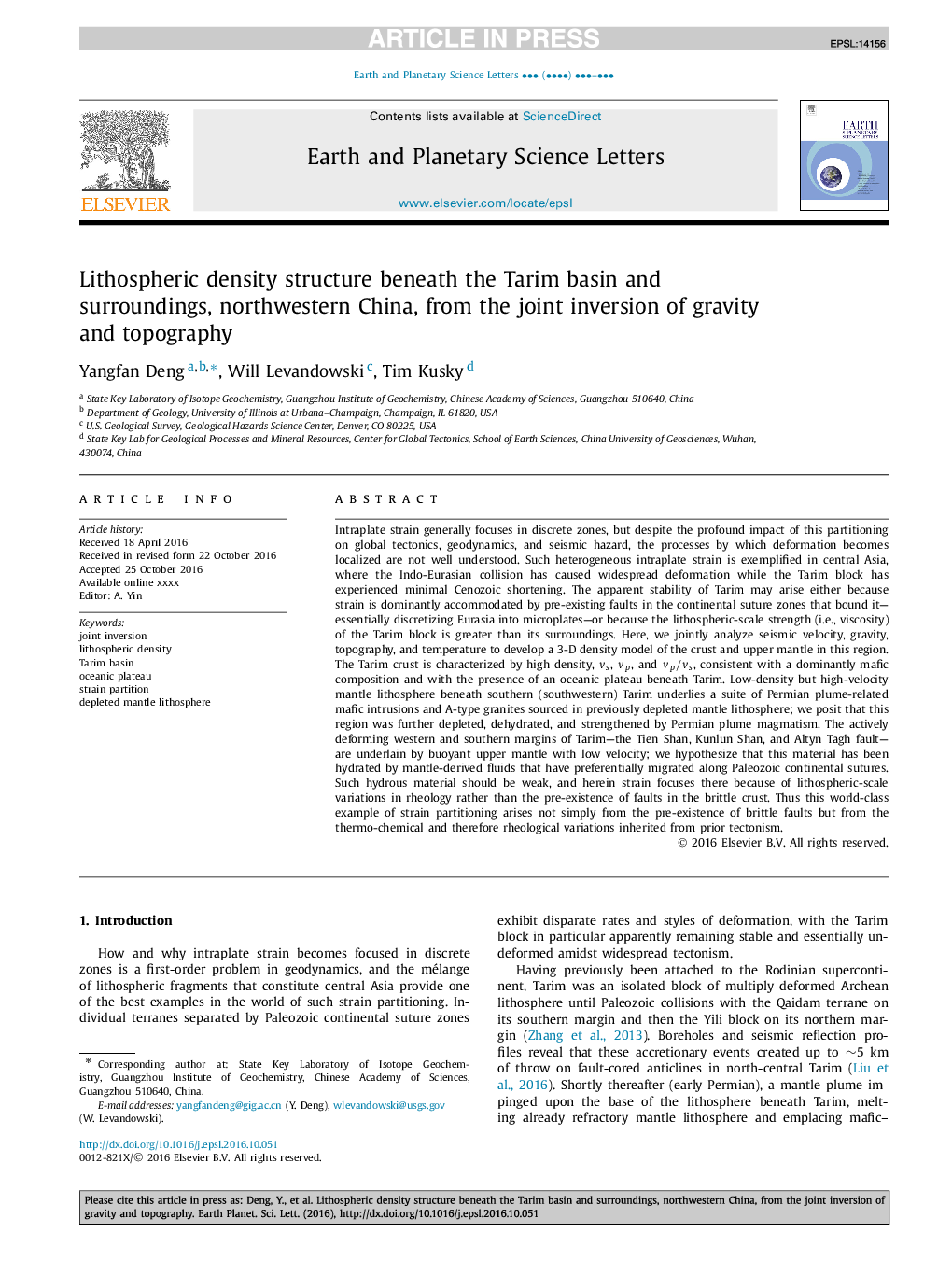| کد مقاله | کد نشریه | سال انتشار | مقاله انگلیسی | نسخه تمام متن |
|---|---|---|---|---|
| 5779894 | 1634696 | 2017 | 11 صفحه PDF | دانلود رایگان |
عنوان انگلیسی مقاله ISI
Lithospheric density structure beneath the Tarim basin and surroundings, northwestern China, from the joint inversion of gravity and topography
دانلود مقاله + سفارش ترجمه
دانلود مقاله ISI انگلیسی
رایگان برای ایرانیان
کلمات کلیدی
موضوعات مرتبط
مهندسی و علوم پایه
علوم زمین و سیارات
علوم زمین و سیاره ای (عمومی)
پیش نمایش صفحه اول مقاله

چکیده انگلیسی
Intraplate strain generally focuses in discrete zones, but despite the profound impact of this partitioning on global tectonics, geodynamics, and seismic hazard, the processes by which deformation becomes localized are not well understood. Such heterogeneous intraplate strain is exemplified in central Asia, where the Indo-Eurasian collision has caused widespread deformation while the Tarim block has experienced minimal Cenozoic shortening. The apparent stability of Tarim may arise either because strain is dominantly accommodated by pre-existing faults in the continental suture zones that bound it-essentially discretizing Eurasia into microplates-or because the lithospheric-scale strength (i.e., viscosity) of the Tarim block is greater than its surroundings. Here, we jointly analyze seismic velocity, gravity, topography, and temperature to develop a 3-D density model of the crust and upper mantle in this region. The Tarim crust is characterized by high density, vs, vp, and vp/vs, consistent with a dominantly mafic composition and with the presence of an oceanic plateau beneath Tarim. Low-density but high-velocity mantle lithosphere beneath southern (southwestern) Tarim underlies a suite of Permian plume-related mafic intrusions and A-type granites sourced in previously depleted mantle lithosphere; we posit that this region was further depleted, dehydrated, and strengthened by Permian plume magmatism. The actively deforming western and southern margins of Tarim-the Tien Shan, Kunlun Shan, and Altyn Tagh fault-are underlain by buoyant upper mantle with low velocity; we hypothesize that this material has been hydrated by mantle-derived fluids that have preferentially migrated along Paleozoic continental sutures. Such hydrous material should be weak, and herein strain focuses there because of lithospheric-scale variations in rheology rather than the pre-existence of faults in the brittle crust. Thus this world-class example of strain partitioning arises not simply from the pre-existence of brittle faults but from the thermo-chemical and therefore rheological variations inherited from prior tectonism.
ناشر
Database: Elsevier - ScienceDirect (ساینس دایرکت)
Journal: Earth and Planetary Science Letters - Volume 460, 15 February 2017, Pages 244-254
Journal: Earth and Planetary Science Letters - Volume 460, 15 February 2017, Pages 244-254
نویسندگان
Yangfan Deng, Will Levandowski, Tim Kusky,